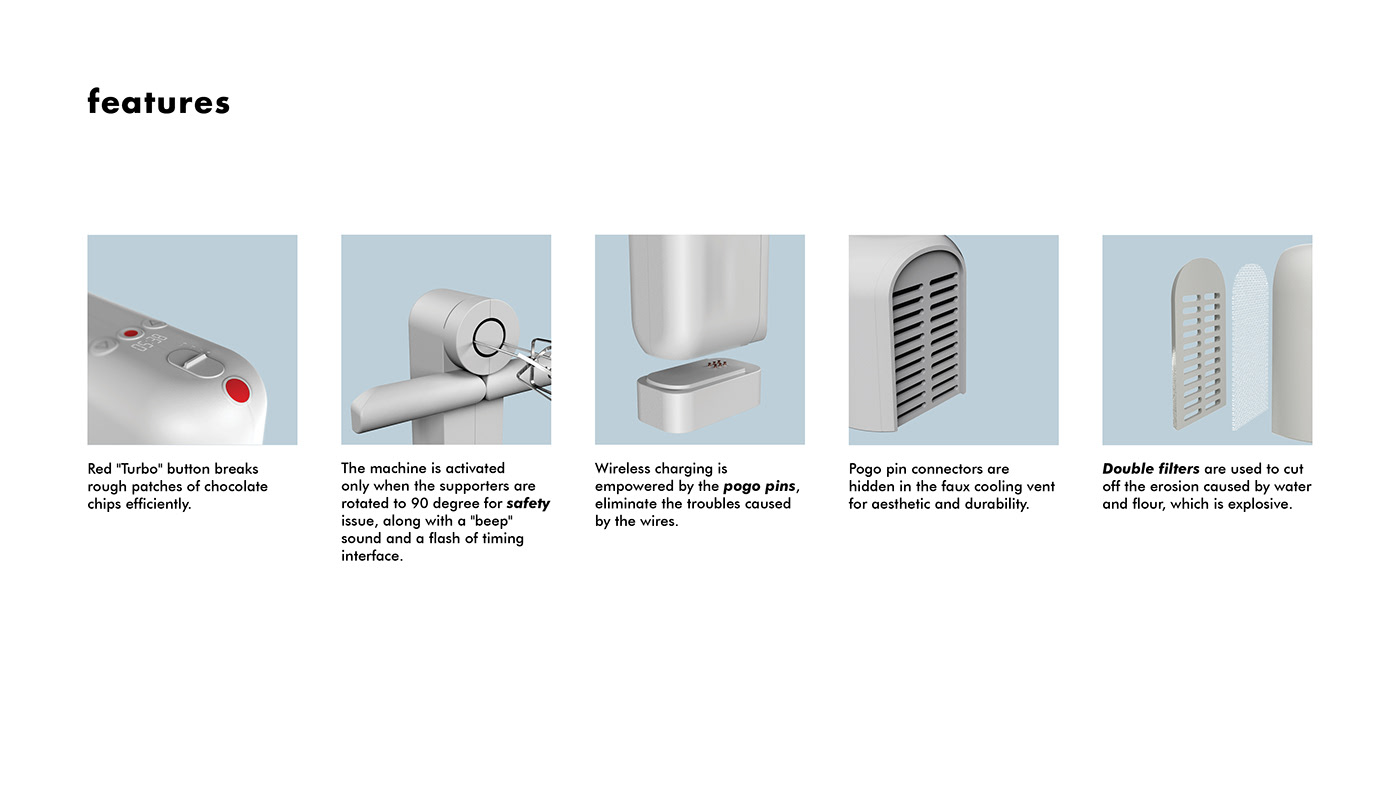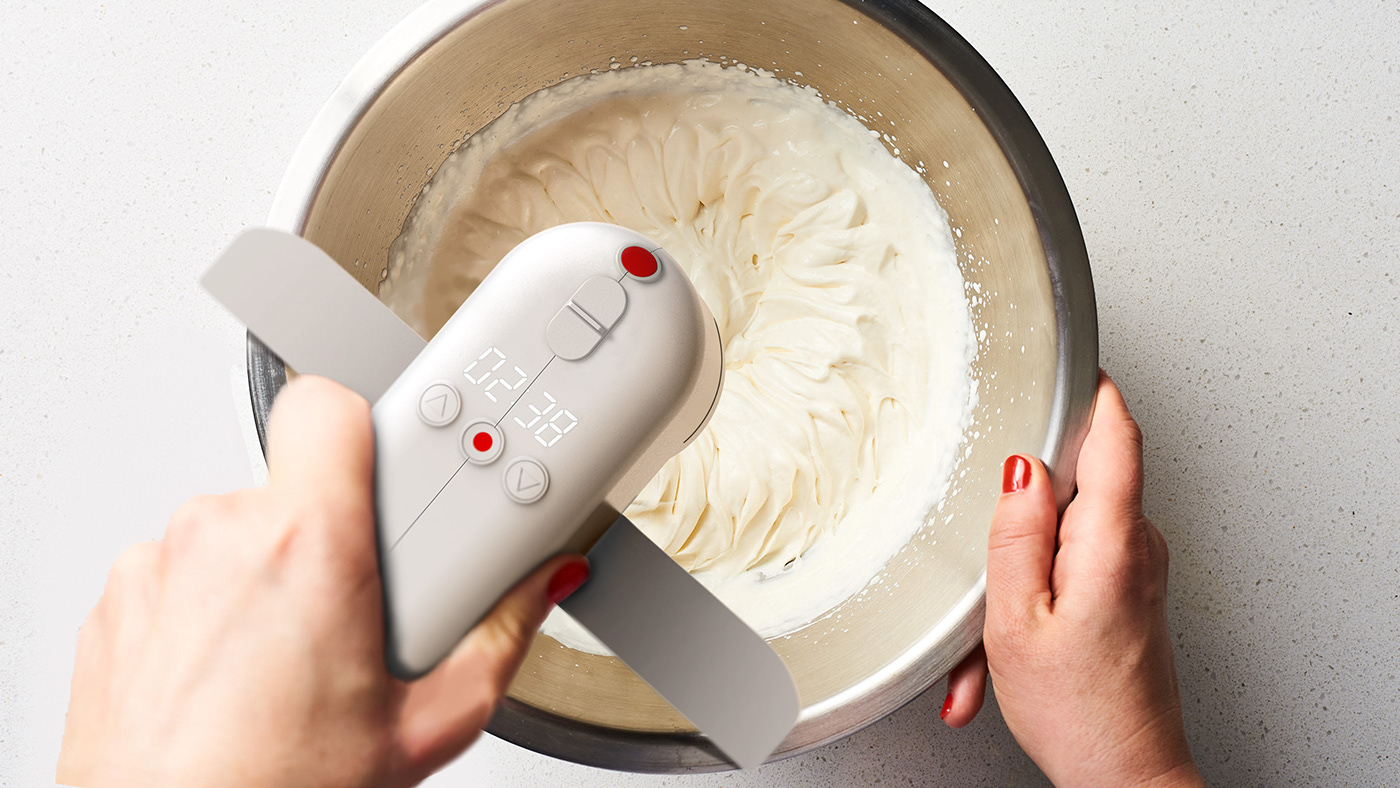S e t i f r i
What is between the hand-held mixer and the stand mixer?
While amatuer bakers at home are complaining about the arm fatigue cost by the long working duration of traditional hand mixer, young professionals who use a stand mixer are carefully wiping and moving their heavy expensive device into the little storage in apartment. This has lead me to think, what can be a compromise of both - a hybrid that works without the concersn I notived above?
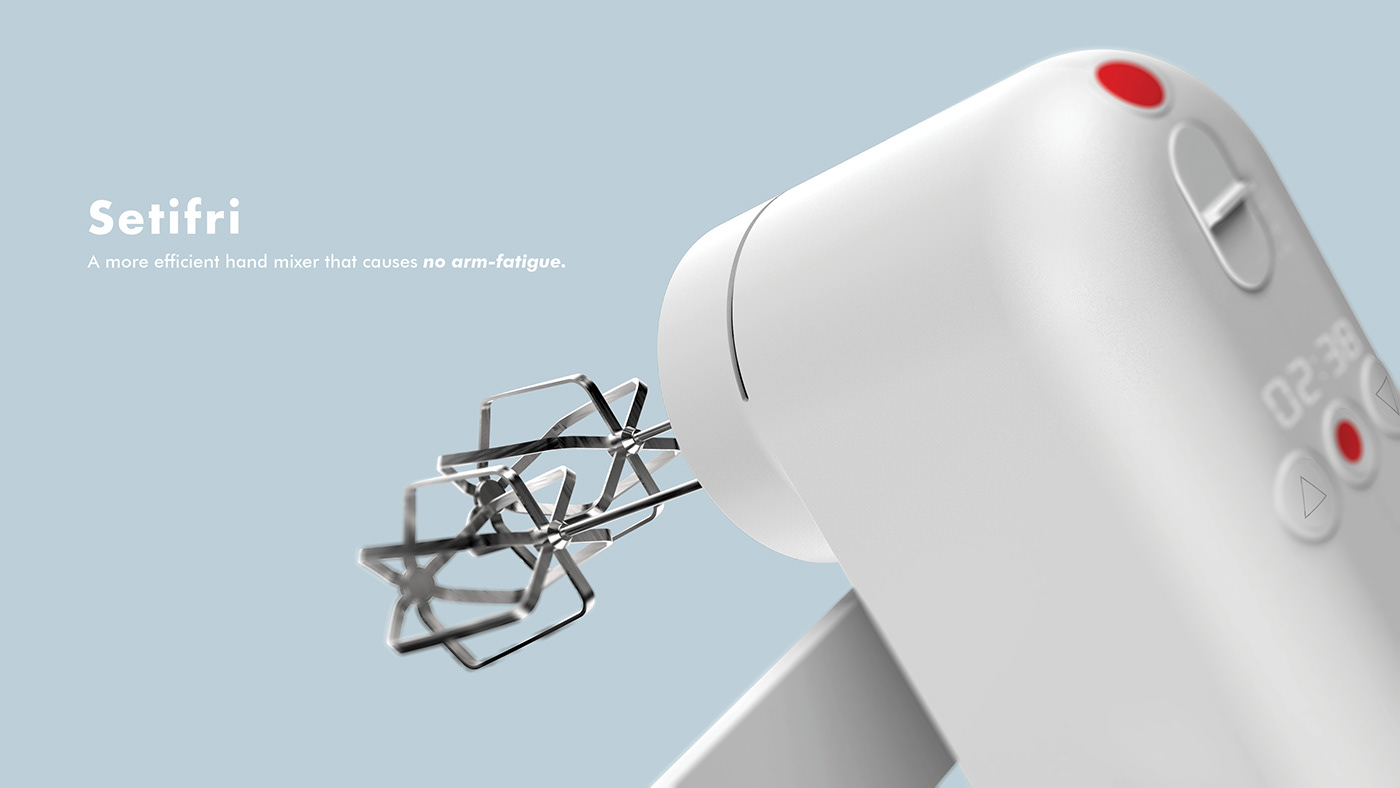
Therefore, I went to a local bakery in downtown, did a shadowing on and interview with the hands-on professional baker and a amatuer baker. Trying to target their pain points chronologically. By Peak-End rule, I decided to aim at improving the long-duration problem happens in the peak, and storage problem at the end.

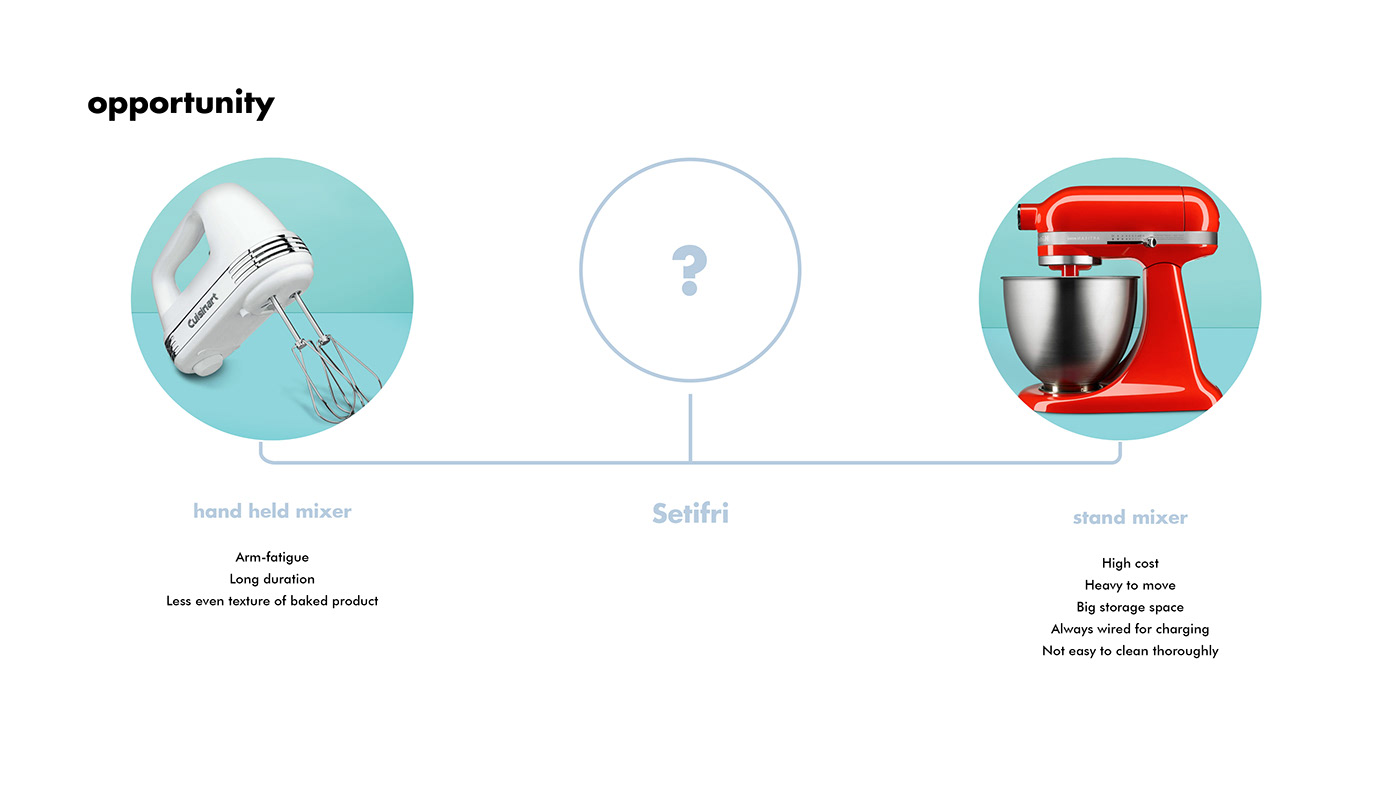

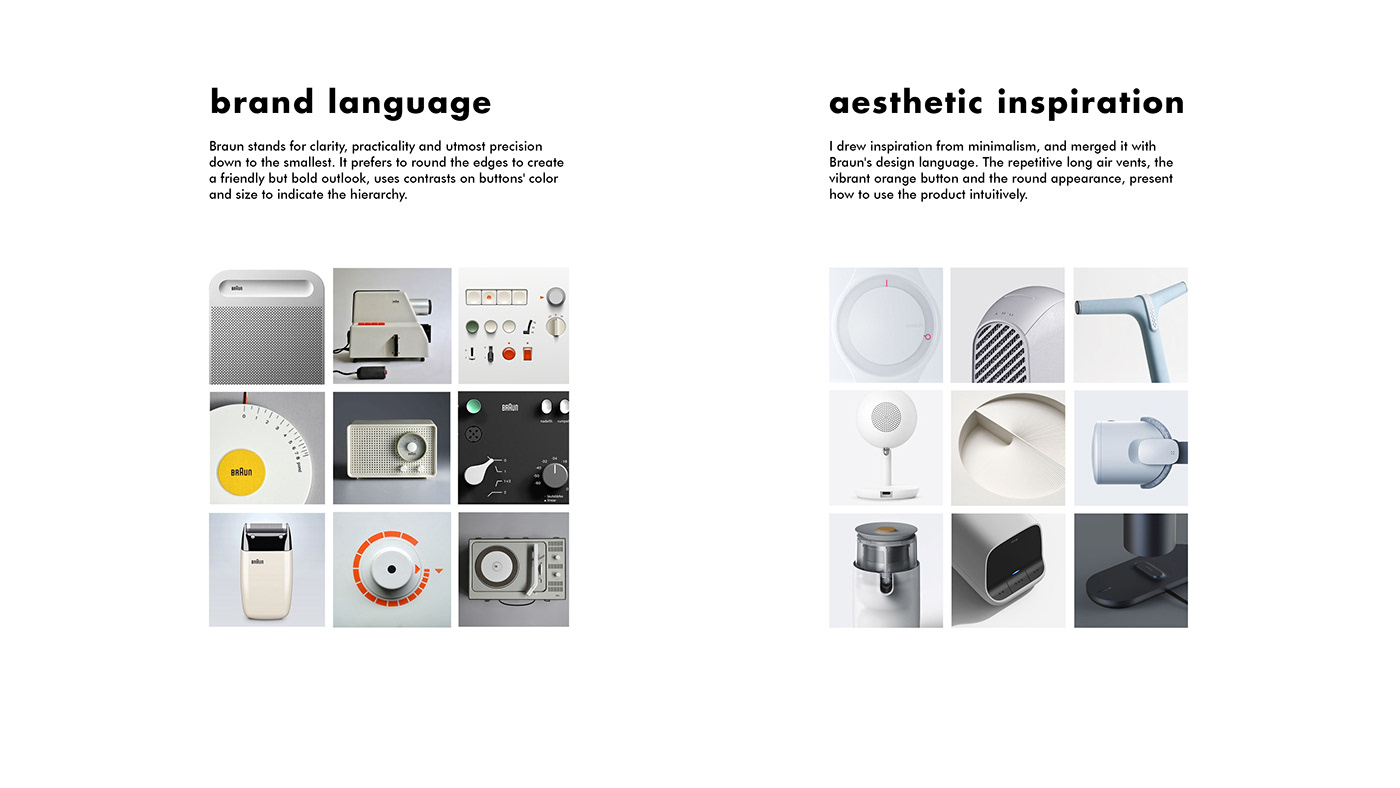
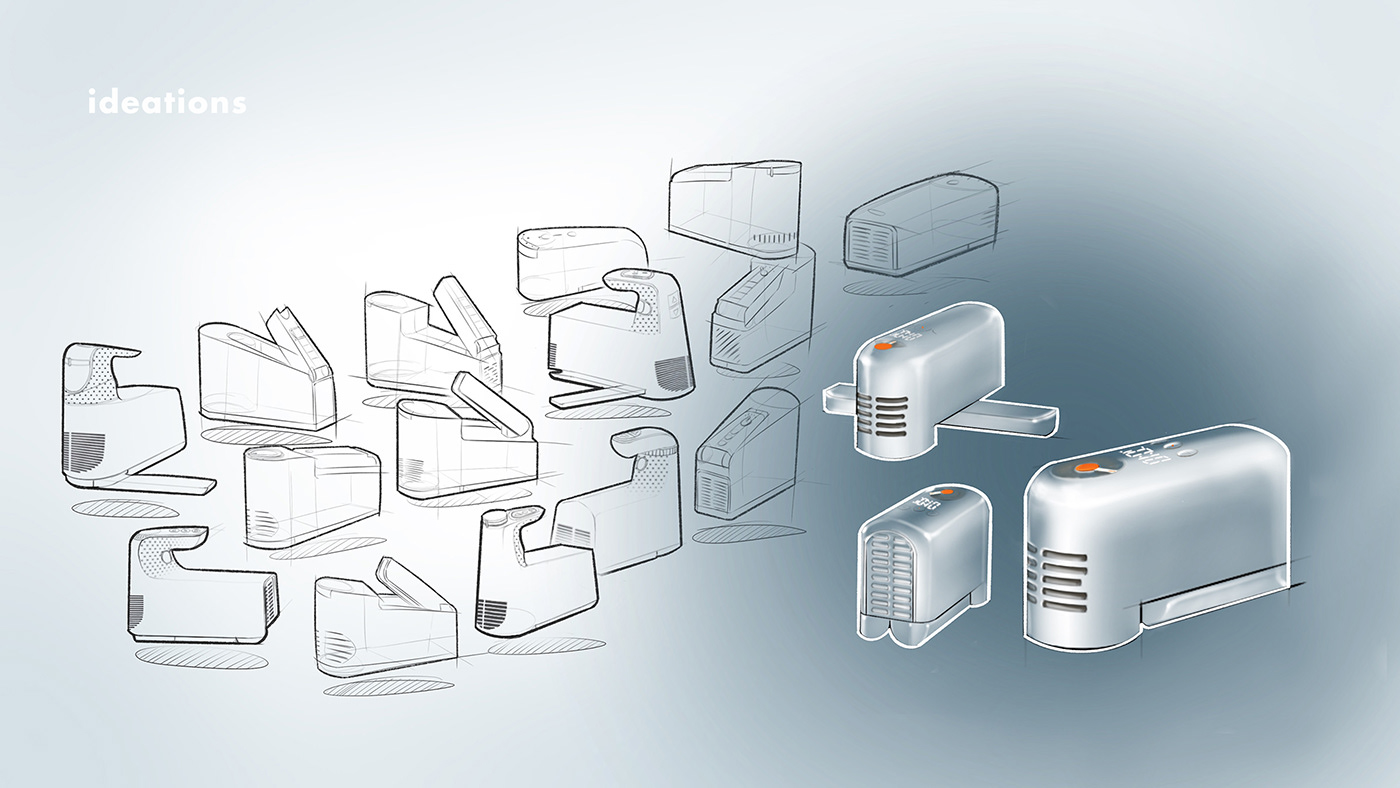
When I visit the local bakery, I noticed that they use a two-way turning industrial moxing machine in the store, which increases the efficiency of mixing the dough and involve less air into it. Therefore, I integrated this double shaft into my design, which doesn't involve a turning bowl, to bring a better bake products to the user.

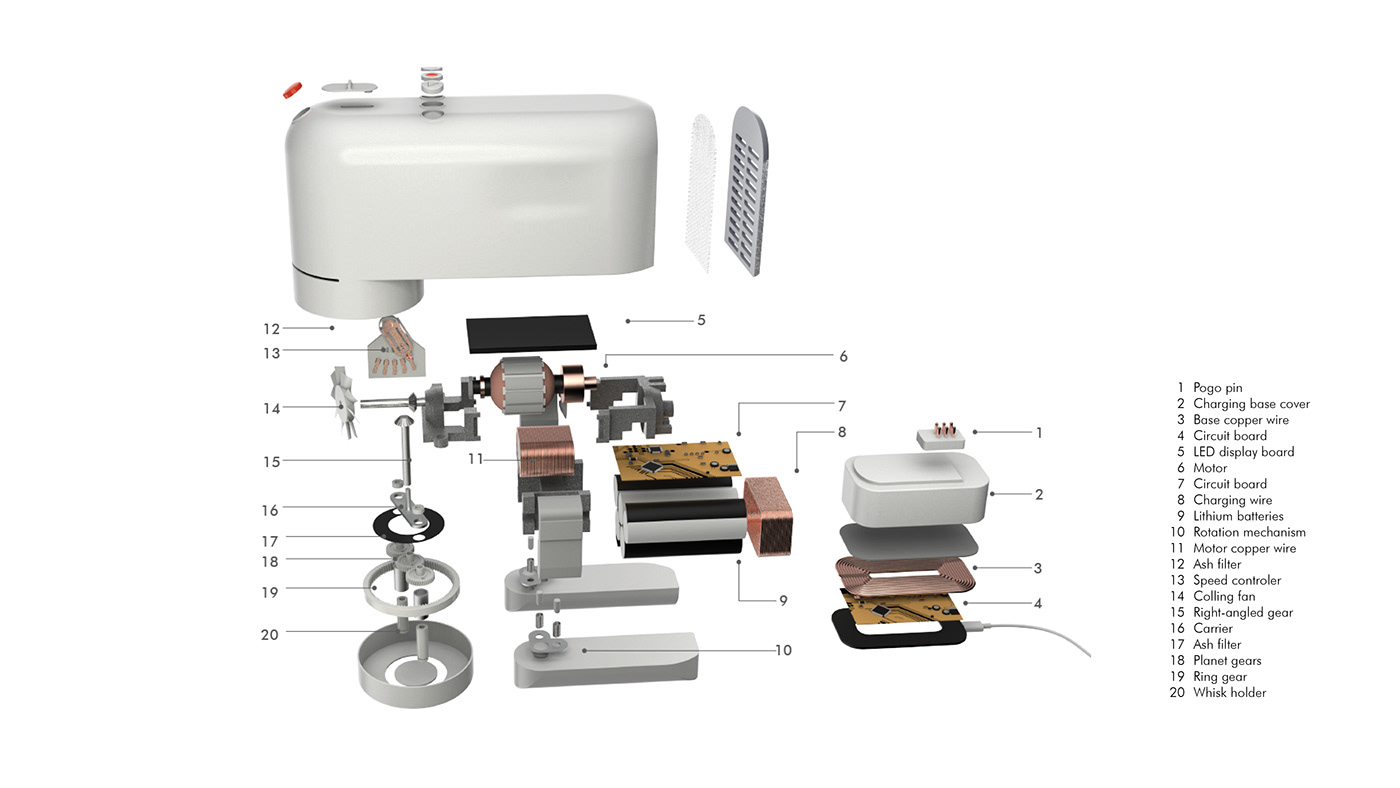
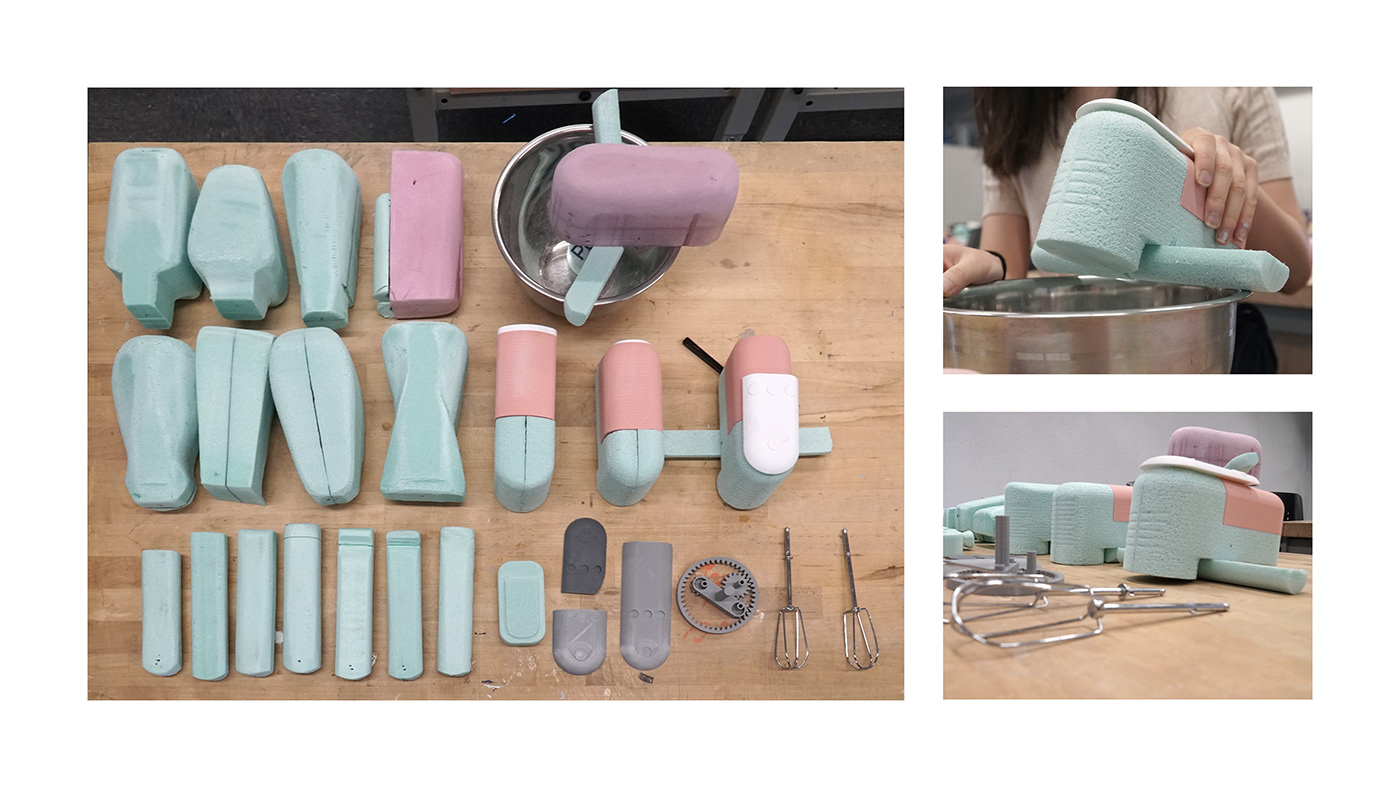
After I made the physical model of the iteration, I did a user test with 4 people in different hand sizes, and revised on several details on the final design.
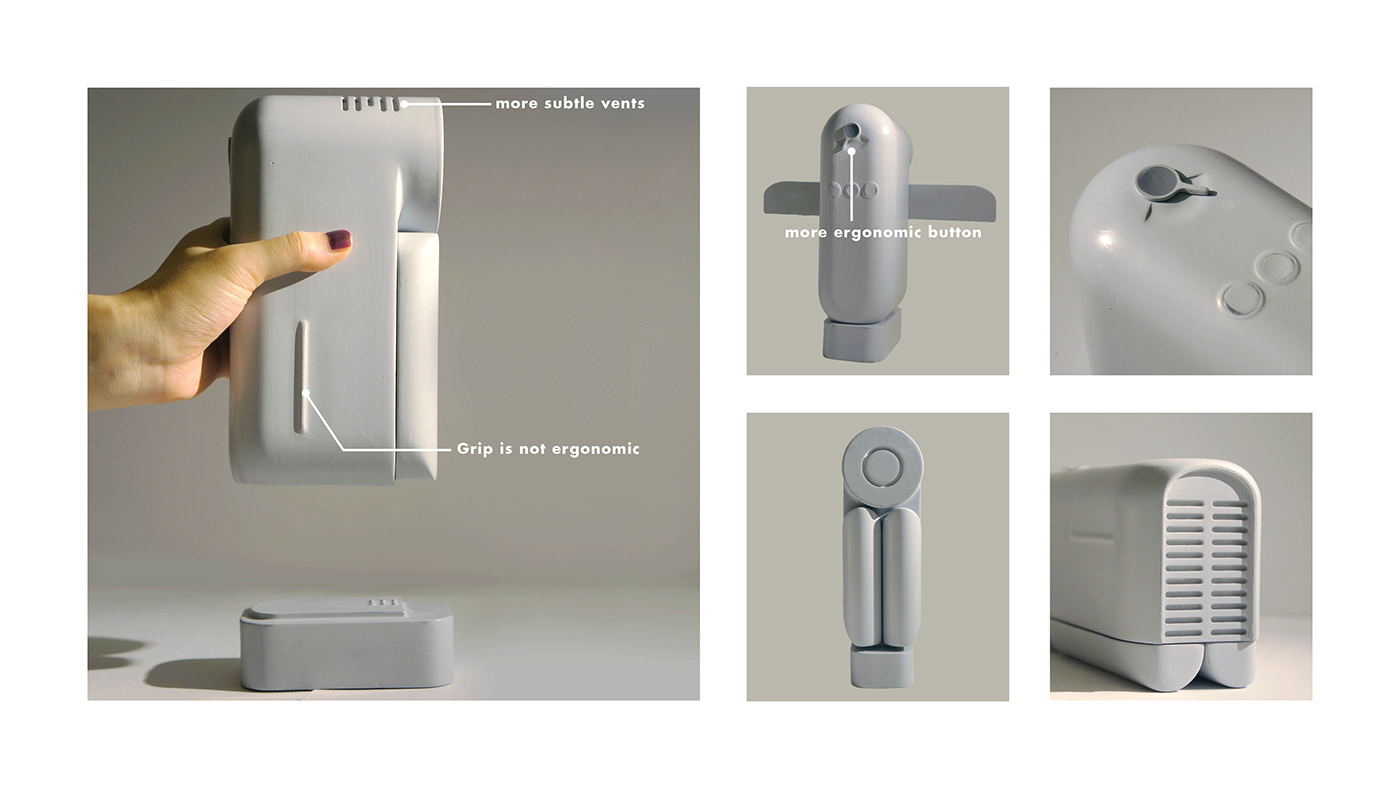
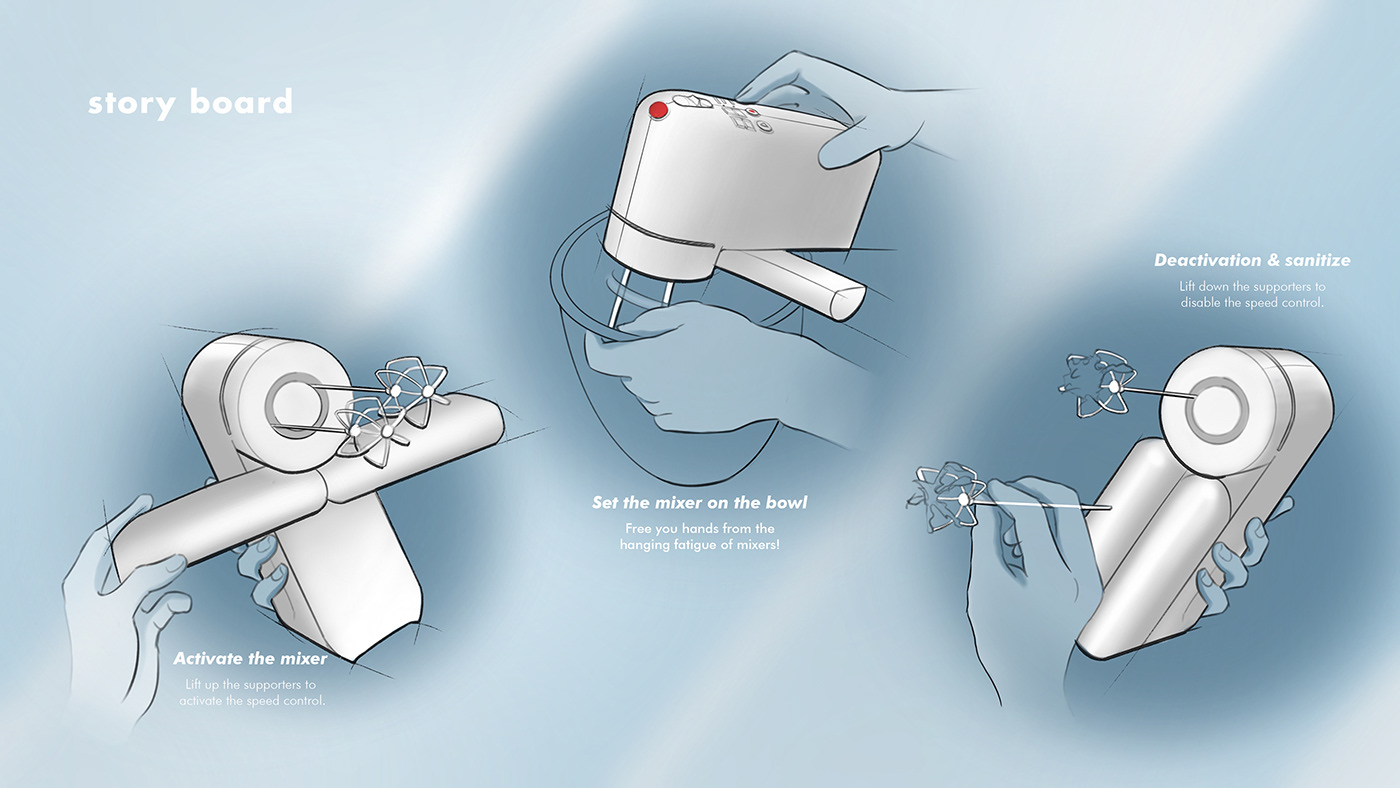
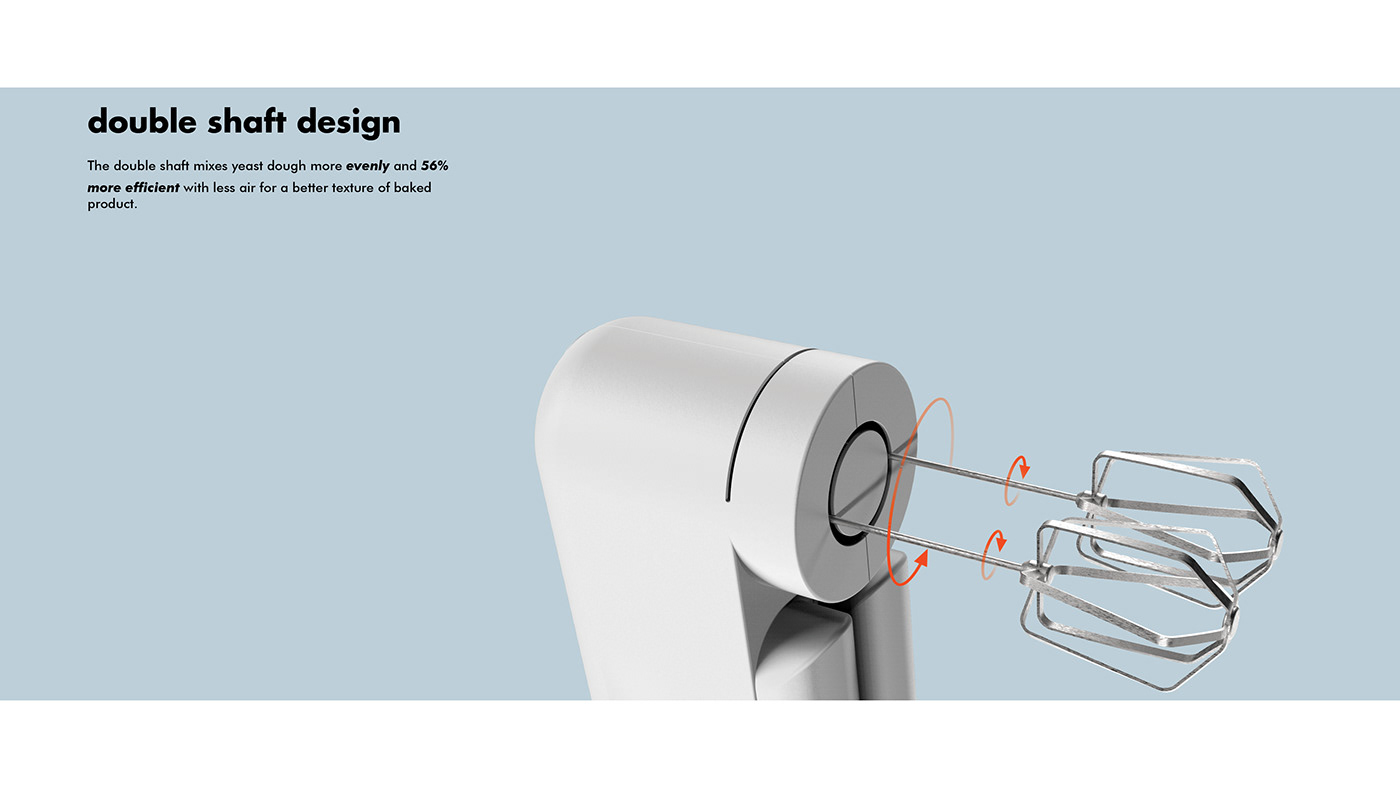
As a amateur baker myself, I noticed that the traditional big-diameter bowl was not designed for using hand-held mixer, but for hand blending. The big diameter will allow the user to make big circle in it for a more even mixture of ingredients. However, this is not the case for hand mixer, which only splash ingredients around the wall of the bowl and causes the user to constantly move their arms to collect them.

